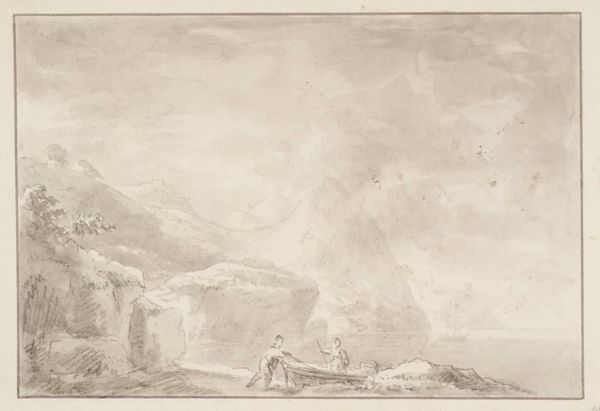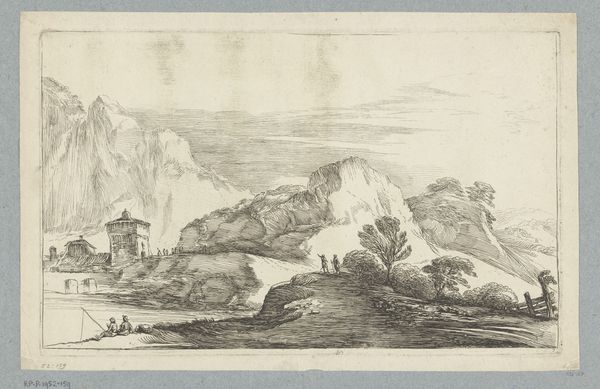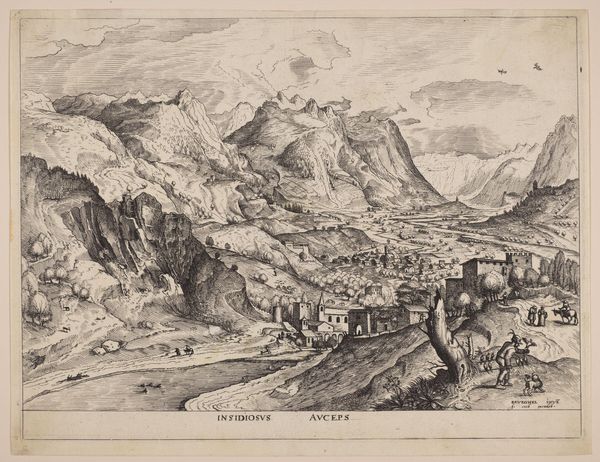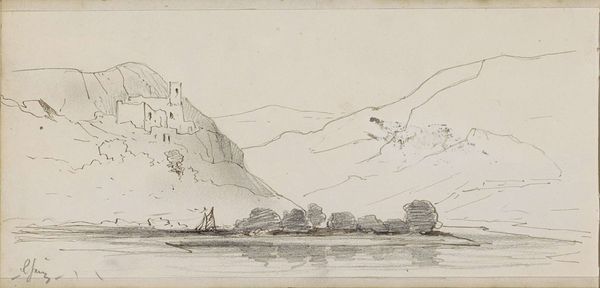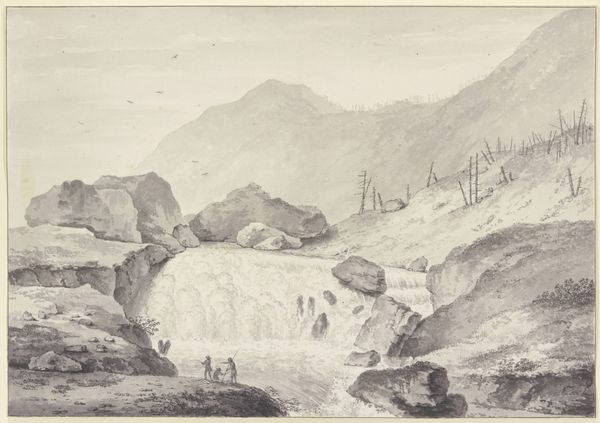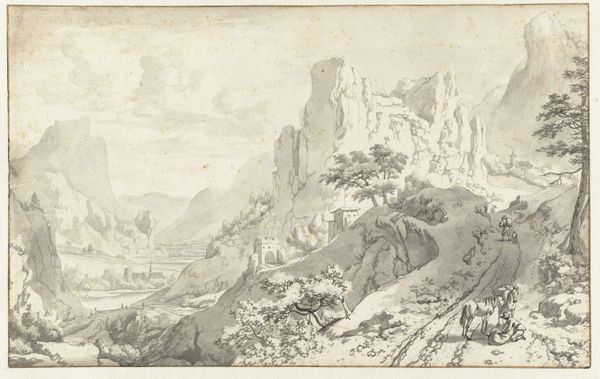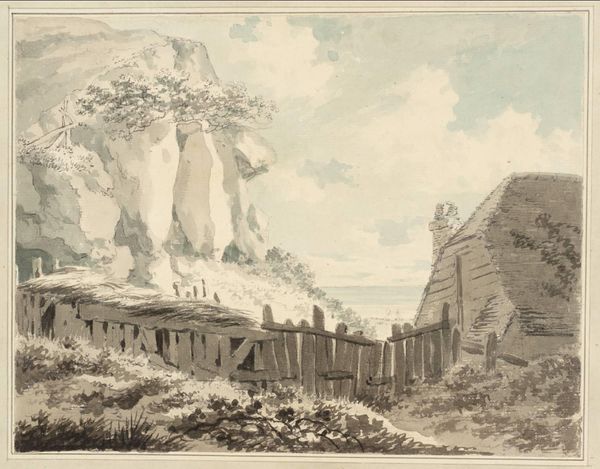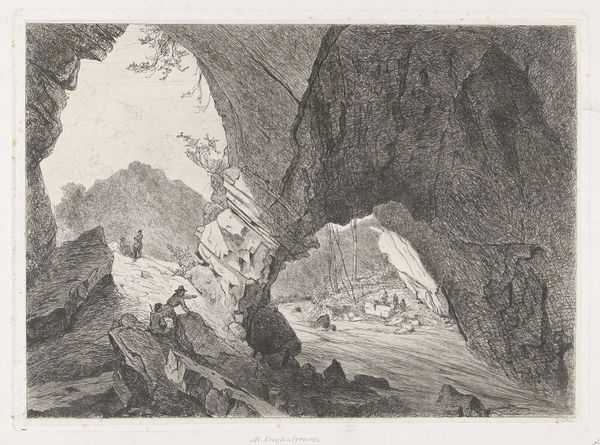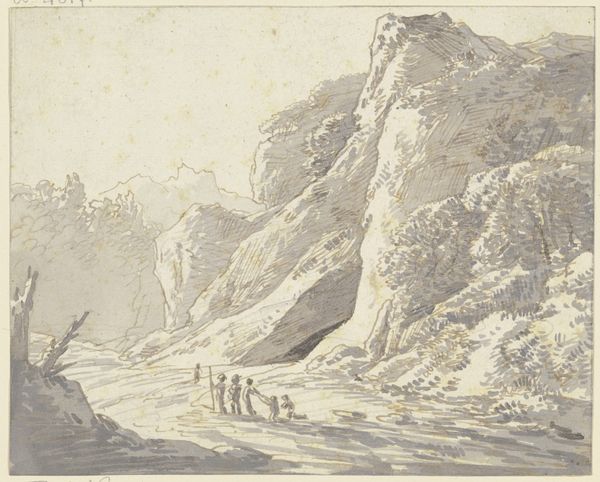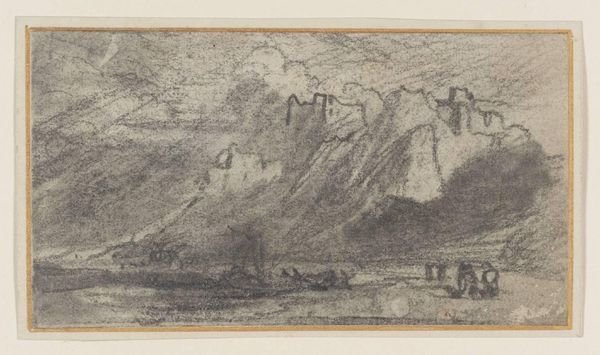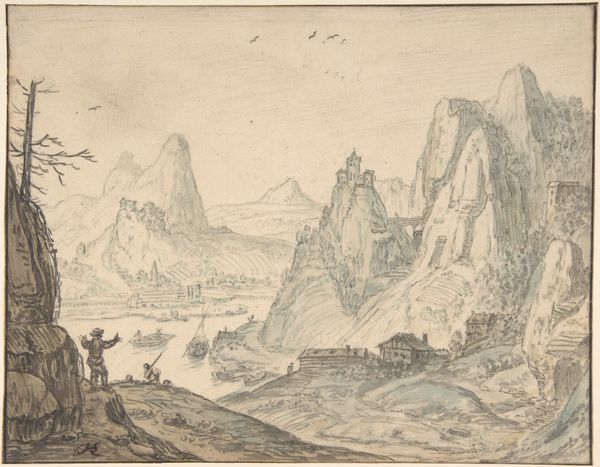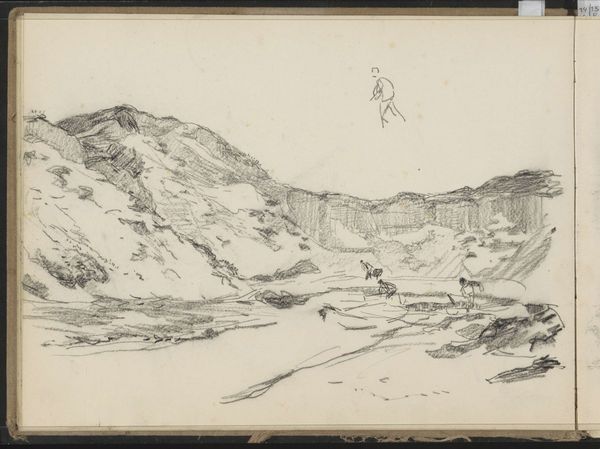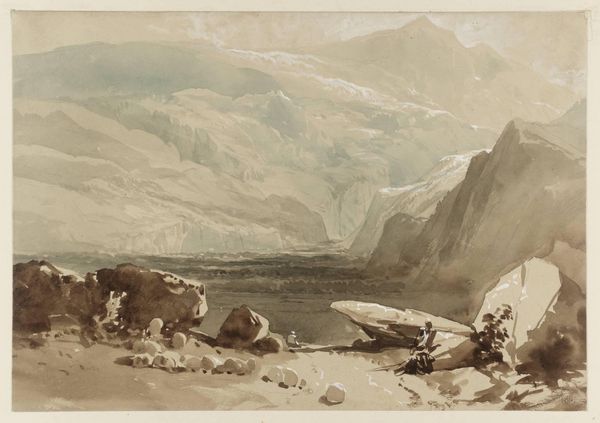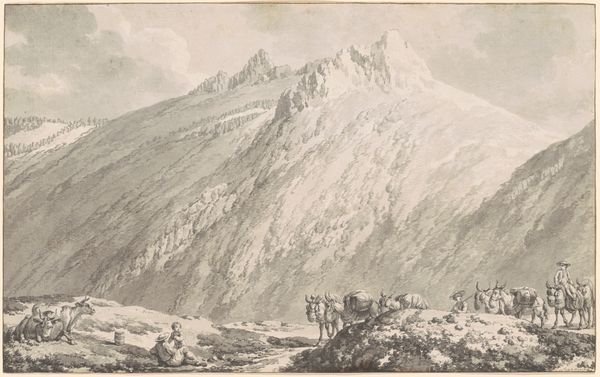
drawing, ink, pencil
#
drawing
#
pencil sketch
#
landscape
#
etching
#
ink
#
romanticism
#
pencil
#
history-painting
Dimensions: height 418 mm, width 566 mm
Copyright: Rijks Museum: Open Domain
Curator: Welcome, everyone, to Johann Christian Ernst Müller’s drawing, "Doortocht van soldaten op de St. Bernard", made sometime between 1800 and 1824. It’s rendered in pencil and ink, offering us a glimpse into a moment of military transit through the Alps. Editor: Immediately, the cool, almost glacial mood strikes me. The monochrome palette emphasizes the harshness and scale of the landscape, reducing the soldiers to nearly insignificant figures against the monumental backdrop. It feels… isolating. Curator: That sense of scale is indeed deliberate. Müller's focus here seems to be the laborious process of traversing such imposing terrain. We see the repetition of figures, the careful rendering of their forms, the evidence of their labor in each drawn line, almost a cataloging of the means needed for military operation in such environment. Editor: And beyond that physical struggle, I think there is the cultural weight attached to this Saint Bernard Pass. Think of Hannibal, Charlemagne, then Napoleon crossing here... These mountains become a stage for historical destiny. The symbolic resonance is amplified by that looming architecture. Curator: The buildings you mention definitely draw attention. They’re constructed rather practically but almost dwarf the group in size, almost emphasizing the work done within, a silent commentary on the labor involved in supporting that transit or holding to certain routes for long periods. Note the subtle variations in line weight; it suggests different material textures – the rough stone, the softer snow. Editor: Precisely, it seems to act as both sanctuary and reminder of human ambition dwarfed by the vastness of nature. The buildings look like stony keeps representing the ambition to control passage but also represent the isolation such effort costs. And the artist really emphasizes those stark shapes with heavy etching against lighter renderings of clouds, sky, and ground. Curator: I find that tension, between nature and those attempting to reshape it through their activities, is indeed very present here, it's evident in the technique of its creation, which shows the manual drawing efforts being performed and repeated across different registers. Müller really uses it to explore themes of movement and obstruction, of production in relation to these historical actors, this Romantic sensibility that he depicts... Editor: It gives us an almost empathetic visual story of power, struggle, and ultimately, the relatively ephemeral mark we leave on this landscape that is so great in power. Curator: Yes, a really striking work in terms of revealing an interesting combination of craft, setting, history, labor and the marks of cultural ambition.
Comments
No comments
Be the first to comment and join the conversation on the ultimate creative platform.
